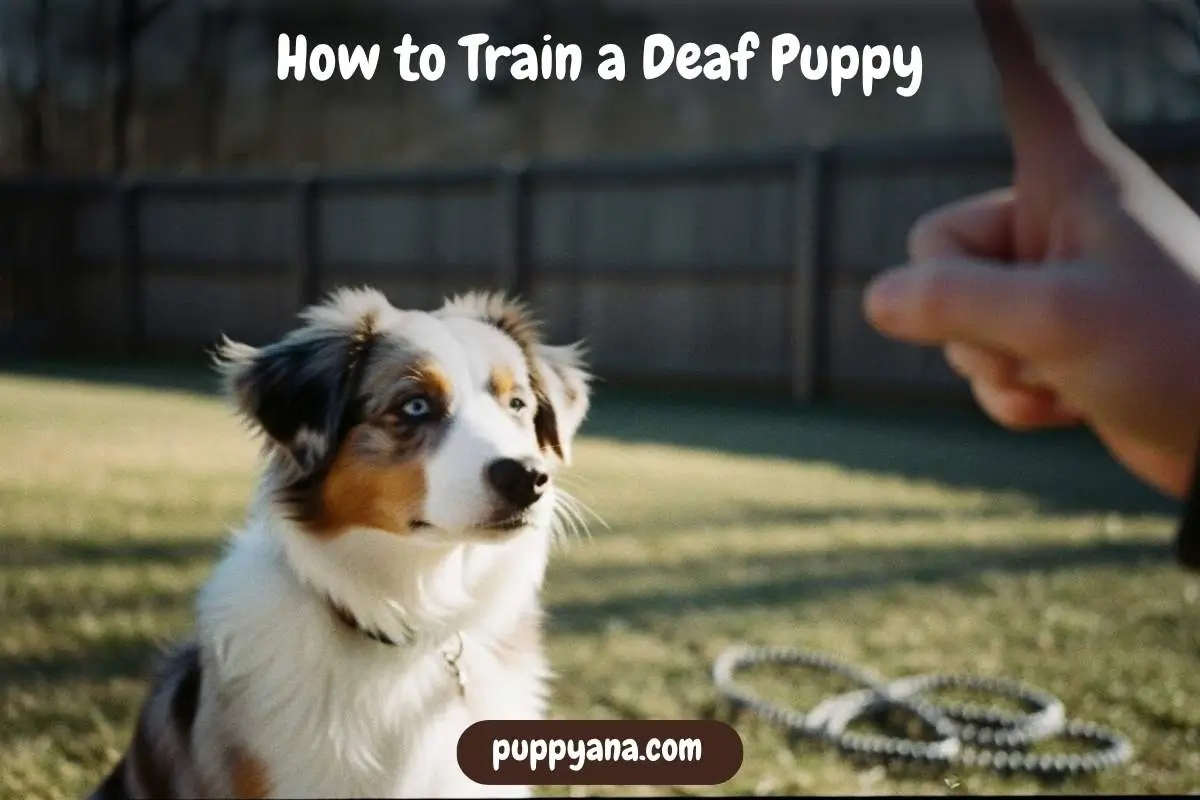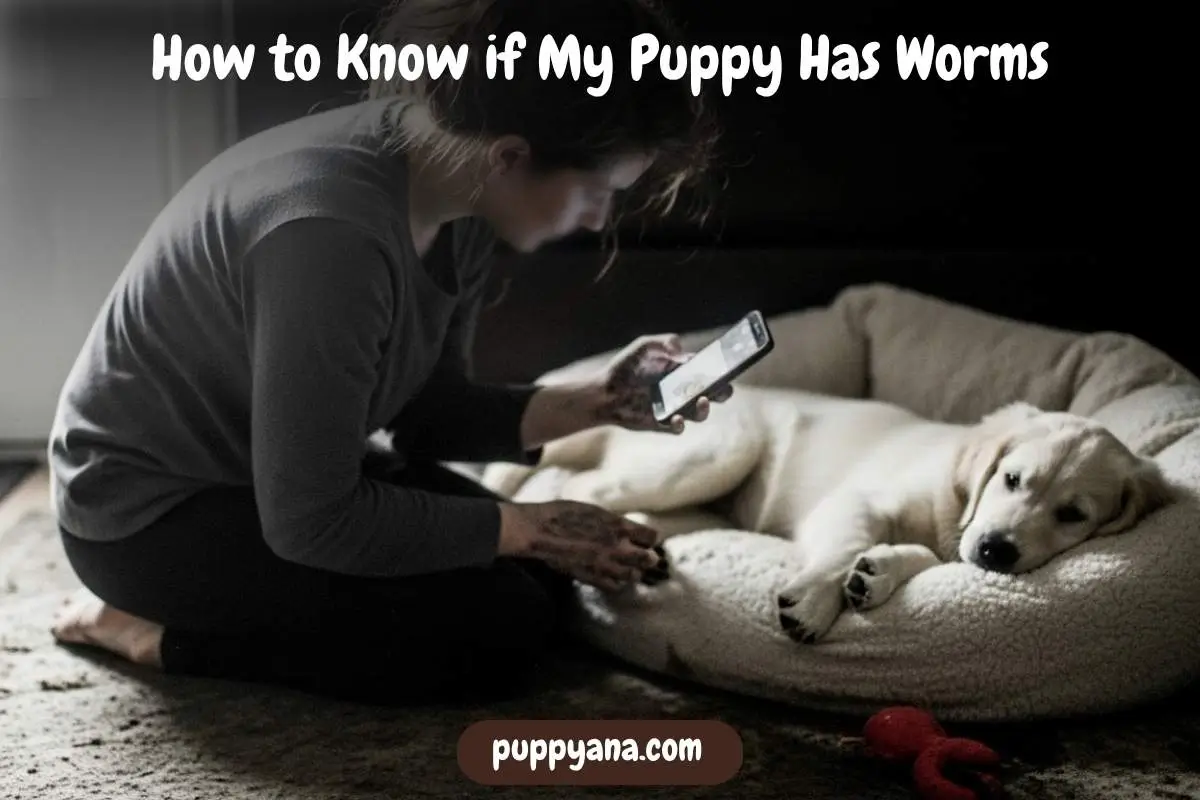Getting your puppy to focus for more than a few seconds can feel impossible some days, let alone asking them to sit on command. But with the right technique, you can teach a puppy to sit in just 5 minutes, with no yelling, no pushing, and no stress.
As a trainer and foster puppy parent, I’ve used this quick-start method on shy rescues, high-energy herders, and playful retrievers. Whether you’re raising your first puppy or trying to teach an older dog, this method works because it’s based on timing, motivation, and natural body movement.
This guide walks you through a 3-step sit-training routine that uses positive reinforcement teach, lure training, and real rewards. Everything here is backed by practical experience and trusted sources like the American Kennel Club, the ASPCA’s dog training tips, and guidance from certified trainers.
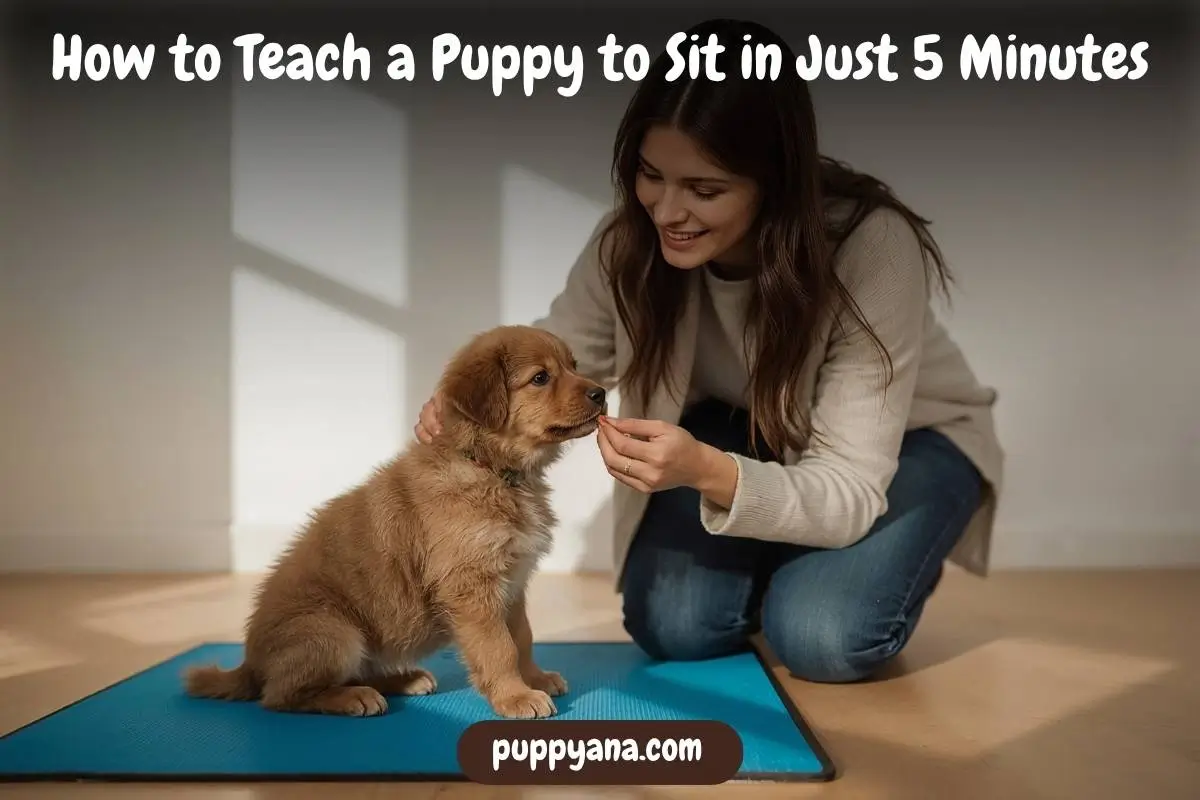
Table of Contents
ToggleCan You Really Teach a Puppy to Sit That Fast?
Yes, you really can. Most dogs learn the basics of “sit” in their first few repetitions if the steps are clear and consistent. It might take a few short mini-sessions for young dogs to fully lock it in, but the action itself happens quickly with the right setup.
The trick is not just to say “sit” over and over. It’s about helping your puppy make the choice themselves, then marking and rewarding that action. This is how puppy conditioning works best in early learning.
Prepare for Success Before You Start
You only need five minutes, but that time should be focused.
Here’s what to have ready:
- Small, soft treats your puppy loves (cut-up chicken, treats, cheese shreds)
- A quiet area free from distractions like kids, toys, or other pets
- A surface with some grip (carpet, mat, or grass—not slippery floors)
- Good energy: Train when your pup is calm but alert—not wild, and not sleepy
If you’re not sure which treats to use, check out reward lists for training puppies from VCA Hospitals to find the best options for your dog’s size and age.
Step-by-Step: How to Teach a Puppy to Sit in Just 5 Minutes
Step 1: Get Their Attention
Hold a tiny treat in front of your puppy’s nose. Let them sniff it, but don’t give it to them yet.
Speak softly to connect:
- “What’s this?”
- “Are you ready?”
This opens the line of communication and builds your voice as a cue.
Step 2: Lure Into Position
Slowly move your hand up and slightly over the top of your puppy’s head. This motion naturally causes pups to shift their weight back so their bottom lowers.
As soon as their rear hits the ground, say your marker word (like “yes!” or use a clicker) and give the treat immediately.
You can say “sit” just as they begin to drop down, not too early and not while they’re still confused.
Real-life tip: I taught a 9-week-old Lab mix this by using boiled chicken and a slow, steady lure. It only took three attempts. When the timing is right, the learning happens fast.
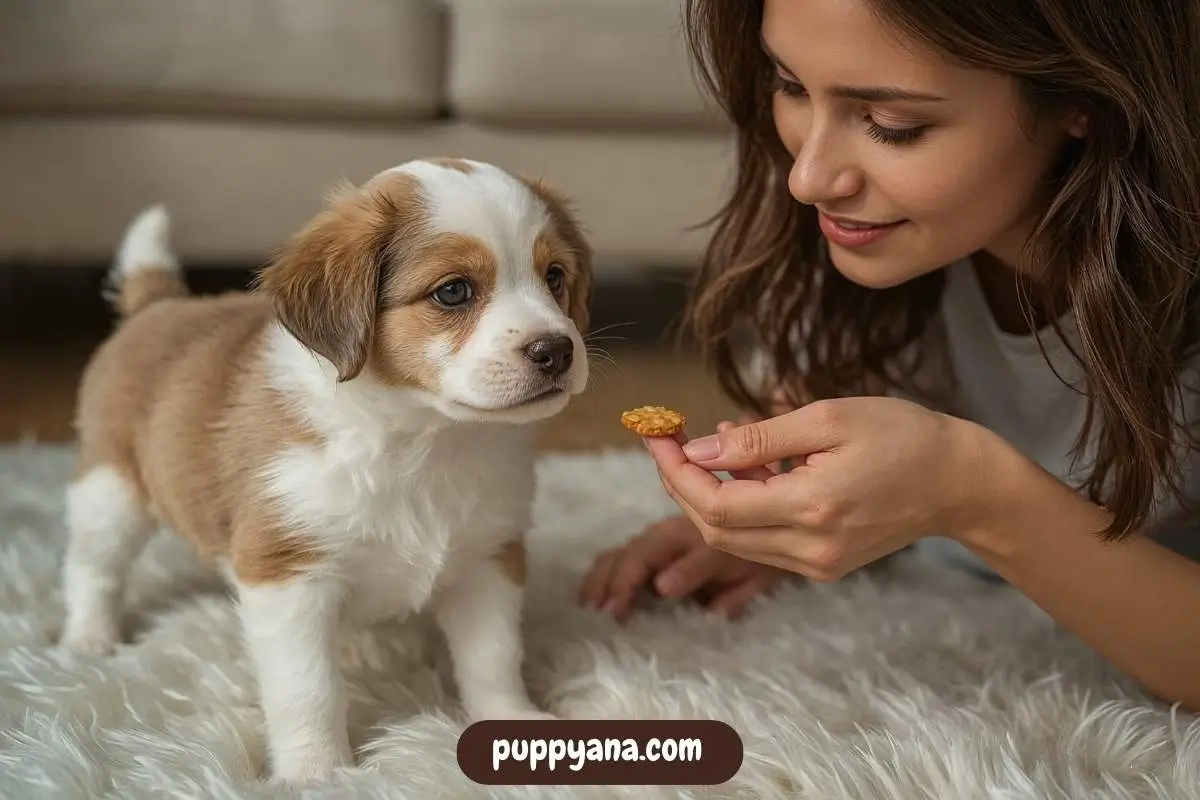
Step 3: Repeat and End on Success
Do 3–5 quick repetitions, keeping things short and fun. If your puppy starts jumping, spinning, or barking during training, take a break.
Wrap up the moment your pup does a great sit.
End your 5-minute session with:
- Calm petting
- One good treat
- A happy “all done!”
That closure helps keep the puppy upbeat and excited for the next session. You’re building a habit that tells their brain: “Sit = reward.”
When to Say the Cue Word “Sit”
Knowing when to say a cue word like “sit” can make or break your training.
Too soon, and your puppy doesn’t know what you’re asking. Too late, and they’ve already done the action with no understanding of the word.
The best time to say “sit” is as your puppy is in the process of sitting down, when their back end starts to lower naturally. Then immediately mark it with “yes!” or a click, then give the treat.
Avoid saying “sit” at the wrong time:
- Don’t repeat it if they haven’t responded
- Don’t say it after their bottom has already touched the ground
- Don’t use it as a command if they have no clue what you want yet
With my Boston Terrier foster, I noticed she responded faster when we waited for that rear-end-lowering moment instead of giving her the cue too soon.
That one little timing change can cut your training time in half.
Why Sit is the Perfect First Command
Teaching sit is the foundation of basic puppy manners. It helps your dog learn impulse control and gives them a way to ask for things politely.
Benefits of teaching sit early:
- Stops jumping during greetings
- Calms them before meals and walks
- Gives them a safe position in new situations
- Builds their attention skills
Once my foster pup Ruby learned “sit,” she began offering it anytime she wanted to go outside or get our attention, no barking, no bouncing.
Common Mistakes That Slow Down Training
Even with the right technique, some habits can cause confusion. Avoid these:
- Saying “sit” too early or before showing them what to do
- Repeating the word many times without reward
- Ignoring small successes
- Training too long (past 5 minutes)
If your puppy’s not getting it, go back to the earlier step. Slow down. Use better treats or work in a more quiet spot.
For tip breakdowns, this AKC sit training guide explains what trainers recommend and why luring works so well.
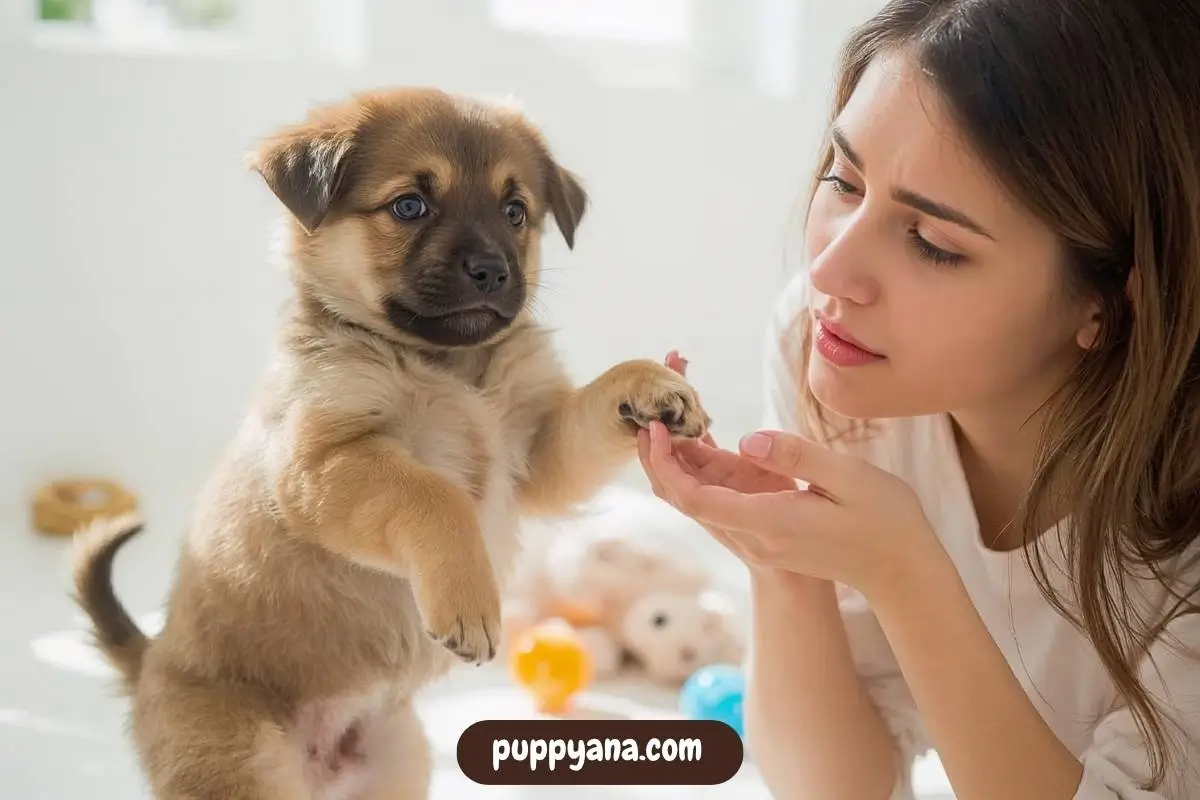
Why Your Puppy Might Refuse to Sit
Despite doing everything “right,” some puppies just won’t sit by the end of their first few training tries. That’s perfectly normal, and often fixable with small adjustments.
Here are a few common reasons your puppy might not sit, plus simple fixes:
- The floor is too slippery
Hard surfaces like tile and hardwood don’t give good grip. Use a yoga mat or train on carpet or grass. - They’re overly tired or zoomy
Sitting is hard when energy is low… or way too high. Train after a potty break and a little play, but not during hyper mode or nap time. - The food reward isn’t exciting
Dry kibble may not motivate some dogs. Try soft, smelly, high-value treats your dog loves, like chicken or cheese. - The hand motion is confusing
Keep your hand low and slow. If your pup jumps or circles, you’re probably moving too fast or high.
I once worked with an 11-week-old dachshund who refused to sit indoors on the wood floor. I moved the session outside onto the patio rug, and he nailed it in 3 reps.
Add Sit Into Real-Day Moments
Once your puppy “gets” the sit command, use it in normal routines:
- Before feeding
- Before going outside
- Before putting on the leash
- When visitors come in
These are calm, clear moments where a sit becomes second nature.
My own dog now offers a sit every time we pick up her leash. I never have to ask, because consistency turned learning into a habit.
How to Fade the Treat Lure Over Time
One of the most common questions in positive puppy training is this:
“Will I have to carry treats forever?”
Answer: Not at all. But you should switch from luring to cueing after your puppy understands what sit means.
Here’s how to fade the lure in 3 steps:
- Use no food in the lure hand – Do the same motion, but the treat stays hidden in your other hand or pocket
- Say “sit” first, then use the empty-lure hand
- Reward after the sit, from the treat stash, not from the hand they followed
Eventually, you’ll phase out food rewards and replace them with praise, toys, or permission to do something fun. The idea is to keep your puppy responsive to your body language and voice, not just snacks.
In real life? Treats are great teaching tools, but attention and timing become the real rewards.
Troubleshooting Sit Training Challenges
If your puppy still isn’t sitting after 5 minutes of trying:
- Switch to a softer or more engaging reward
- Check for distractions in the background
- Use a more obvious lure movement
- Practice at different times (after naps, before meals)
One pup I worked with couldn’t sit on hardwood, until I moved onto a grippy door mat. Problem solved in three tries.
You can also explore other beginner commands like “down”, “wait”, or “touch” if your puppy needs variety. All of them build on the sit cue eventually.
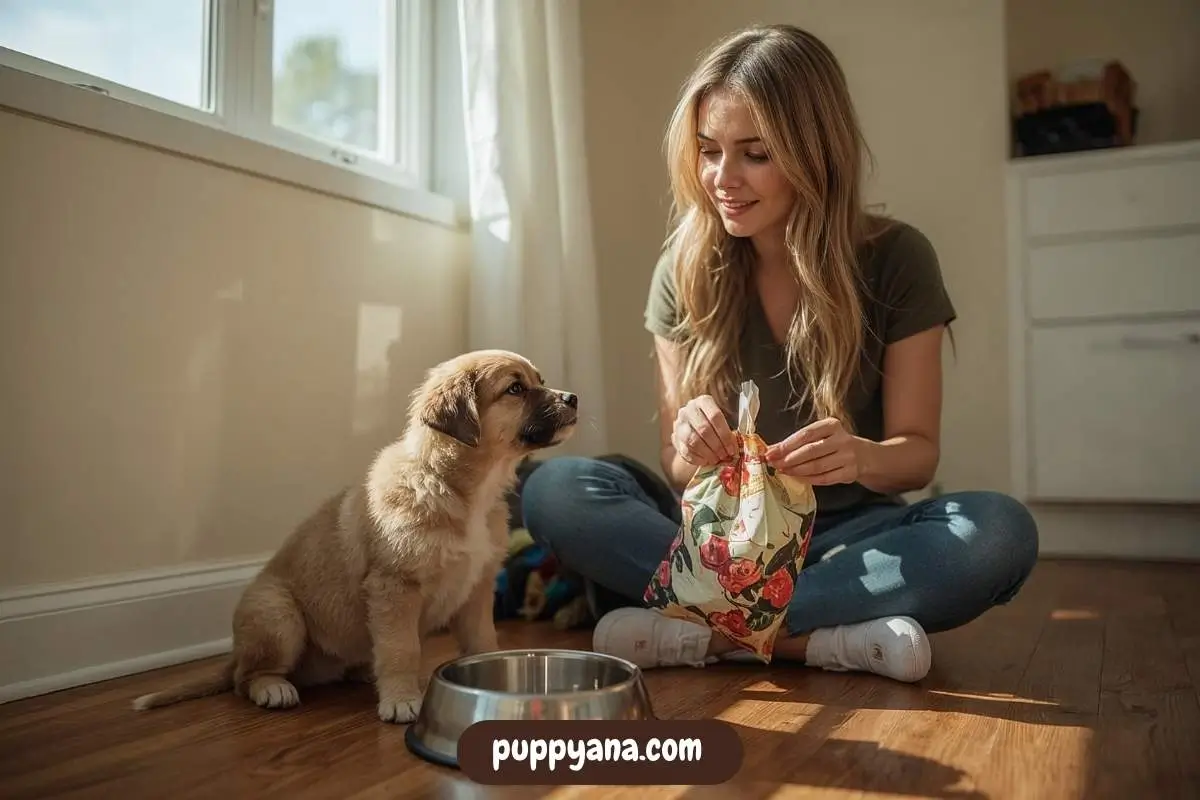
Use Sit to Build Focus and Good Behavior
Sit isn’t just a party trick, it’s a tool for calm behavior. You can build on it to teach:
- Stay
- Wait
- Look at me
- Come when called
Each of these builds stronger responses and better bond-based training with your puppy.
And it starts with this simple, fast foundation.
Tip for First-Time Puppy Parents
PuppyAna often encourages sit training as a first command because it creates instant structure in a puppy’s young brain. Instead of correcting bad behaviors all the time, you’re teaching a clear yes and building focus.
We also recommend starting with “sit before everything” by week 9, before meals, walks, hello, and play.
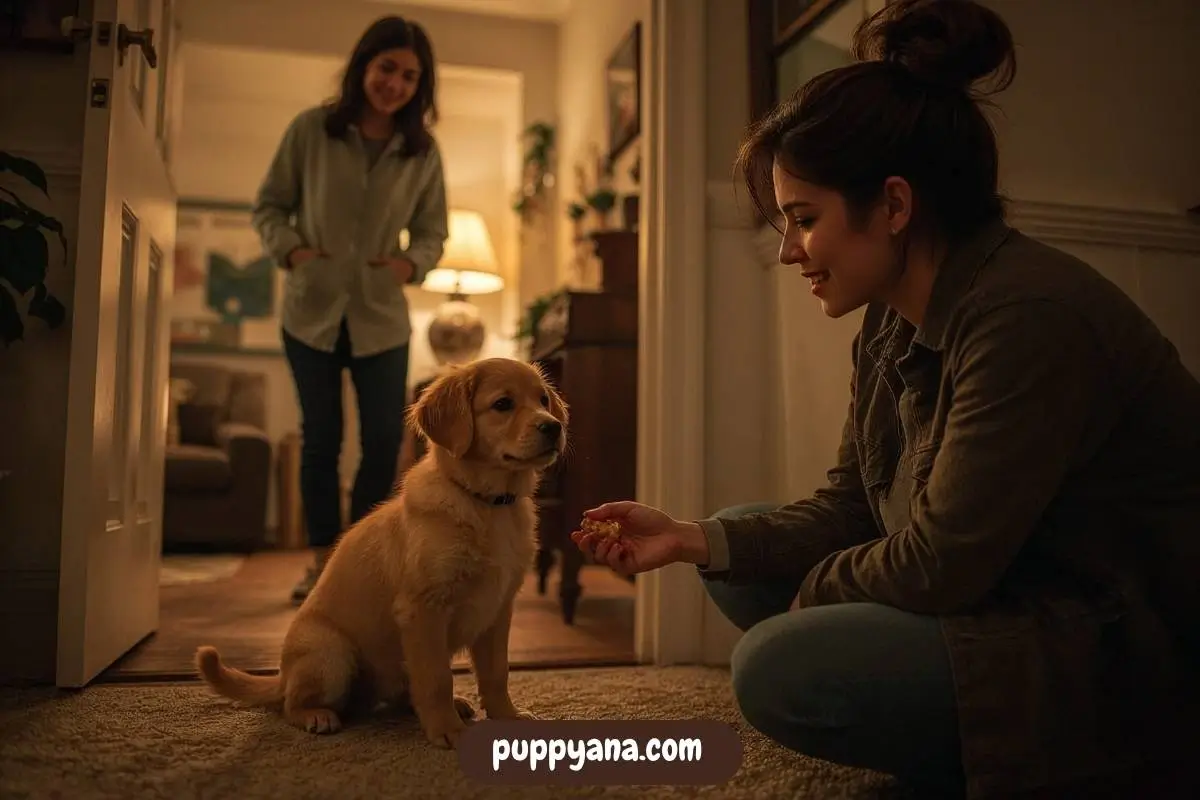
Final Thoughts
You’ve just learned how to teach a puppy to sit in just 5 minutes, and it’s only the beginning of what your pup can do.
The key is short, focused sessions using clear movement and real rewards. Let your puppy learn at their pace, enjoy the small wins, and celebrate calm progress. You’ll not only teach a great command, but you’ll also build trust, attention, and better behavior along the way.
Stick with it, and sit will become second nature.
Frequently Asked Questions
Can a puppy learn sit in one session?
Yes. Most puppies learn this in 3–5 repetitions. Reinforce it with short sessions daily.
When should I start teaching sit?
You can begin as early as 7–8 weeks. Keep it short and gentle.
Do I need to say “sit” before they do it?
Not at first. Lure first, then say “sit” as they begin to sit. Over time, they’ll learn to link the word to the action.
What if my puppy jumps or walks away instead?
Refocus with the treat. Reset your hand lower and slower. Use a quieter space if needed.
How long should I practice?
Five minutes is ideal. Stop while your puppy is still interested.
What surface is best for beginners?
Grass, rugs, or yoga mats. Avoid slippery tile or hardwood.

